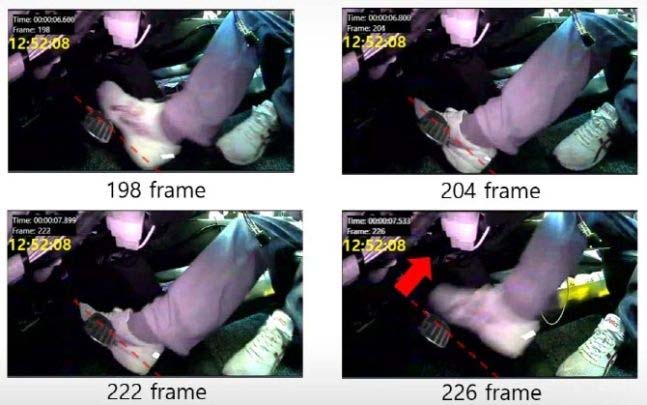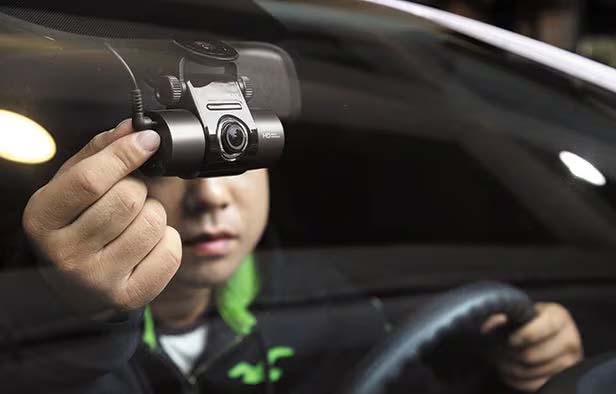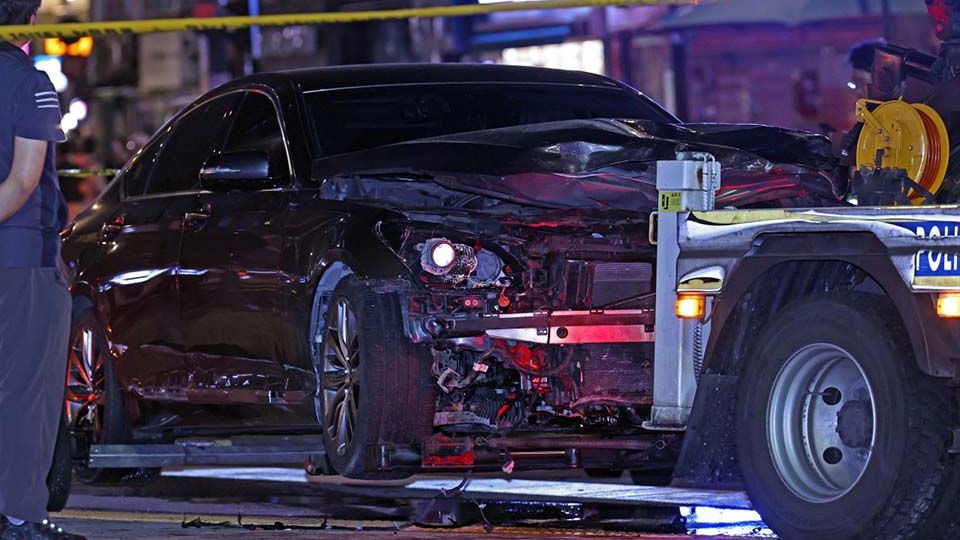July 15, 2024
SEOUL – In the wake of several tragic car accidents across Korea, pedal cameras are being proposed as a new tool to address the contentious issue of sudden unintended acceleration, or SUA. These cameras, which capture drivers’ foot movements, are being touted as a means to provide clear evidence and settle disputes over the true cause of accidents.
The conversation is divided: Should car manufacturers include pedal cameras as standard equipment, or should individual drivers be responsible for installing them? While these devices could provide critical evidence in post-accident investigations, critics argue that they do not prevent SUA accidents and would add financial strain to Korean drivers, many of whom have already spent money on dashcams.
A spate of tragic accidents
Sudden unintended acceleration is when a car suddenly speeds up without the driver pressing the accelerator and often despite pressing the brakes. This surge can be caused by electronic faults, mechanical failures or software bugs within the vehicle’s throttle system.
On July 1, a horrifying accident near Seoul City Hall saw a car driving uncontrollably in the wrong direction, leading to the deaths of nine people and injuries to seven others. The driver claimed the brakes failed due to SUA. Just days later, on July 3, a taxi collided with an ambulance near the National Medical Center in Seoul, injuring three people. Again, the driver blamed SUA. Another incident on July 7 involved a four-car pileup in Yongsan-gu, Seoul, with the taxi driver citing the same issue.
No proven claims
These accidents have sparked heated debates. Were these truly cases of SUA, or could the drivers have mistakenly pressed the wrong pedal?

In a February UN Economic Commission for Europe meeting, the Korea Transportation Safety Authority presented a pedal-camera analysis from a November taxi crash in Itaewon, Seoul. The driver claimed unintended acceleration, but footage showed the accelerator was mistakenly pressed. PHOTO: KOREA TRANSPORTATION SAFETY AUTHORITY/THE KOREA HERALD
Skepticism about drivers’ claims of SUA is widespread. The Korea Transportation Safety Authority reports that from 2010 to 2022, 766 accidents were blamed on SUA. However, after official investigations, none were found to be caused by car defects.
Further analysis by the National Forensic Service between 2013 and 2018 revealed that in 75 percent of 269 investigated SUA claims, driver error was the real cause. In these cases, drivers believed they were pressing the brakes when they had actually pressed the accelerator.
Mandating pedal cameras?
In response to the recent accidents, Rep. Lee Heon-seung of the ruling People Power Party introduced a bill last Tuesday requiring car manufacturers to install built-in pedal cameras.
However, a day later, Transport Minister Park Sang-woo opposed the mandate. He suggested that the ministry recommend individual consumers install pedal cams instead. He argued that mandating pedal cameras could complicate car exports, as no other country has such a requirement.
This could lead to trade friction, and it is uncertain whether the Korean market is significant enough for international carmakers to produce models equipped with pedal cams exclusively for Korea.
Pedal cameras are also reactive measures; they can only show if a driver pressed the wrong pedal during post-accident investigations. Critics argue that focusing on preventive measures would be more effective.
For instance, Japan’s unintended acceleration prevention system detects unusual engine speed spikes and responds with warning sounds or automatic braking. Since its 2012 launch as an optional built-in feature, over 90 percent of new cars in Japan have adopted this system, and its installation will become mandatory next year.
The Korea Transport Safety Authority began a study in December last year to develop an industry-wide standard for similar technology and is expected to complete it by the end of August this year. Hyundai Motor’s recently launched Casper Electric is the only model in Korea currently equipped with such a prevention system.
Ubiquitous dashcams
There’s another debate over the additional costs pedal cameras would impose on drivers in Korea. Many have already shelled out significant amounts for after-market dash cams, which range from 100,000 ($72) to 300,000 won depending on the model and number of cameras. These dashcams provide essential real-time footage as evidence in the event of an accident.

In Korea, dash cams are ubiquitous, with drivers viewing them as essential accessories when purchasing new cars. PHOTO: 123RF/THE KOREA HERALD
A 2019 survey by Embrain Trendmonitor revealed that 88.9 percent of Korean drivers use dash cams, a figure much higher than in many other countries. A 2017 AA Insurance survey found that only 15 percent of respondents in the UK owned dashcams.
Manufacturers like Hyundai have started offering built-in dash cams as optional features. Despite widespread use, dashcams, like pedal cameras, are not legally required in Korea.
Matter of choice
Car engineering professor Kim Pil-su from Daelim University has been a vocal advocate for pedal cameras. He even founded an SUA research group in 2015 to address these issues.
“In Korea, if you’re in a car accident, it’s up to you to prove you weren’t at fault. This contrasts with countries like the US and those in Europe with stronger consumer protection laws, where manufacturers must prove there was no defect if blamed or sued,” he said.
“That’s why I’m pushing for drivers to purchase both dashcams and pedal cams. It’s the only way to settle these disputes over sudden unintended acceleration once and for all,” he added.


